Take me back to Mambacayao- part 2
Probably one of Cebu’s biggest tourism draws, especially to the young set from students out in a break to backpackers looking for some “happenings”, is the island of Bantayan. During Lent, the island’s beaches in Sta Fe are literally swarmed with tents, hammocks and sleeping bags.
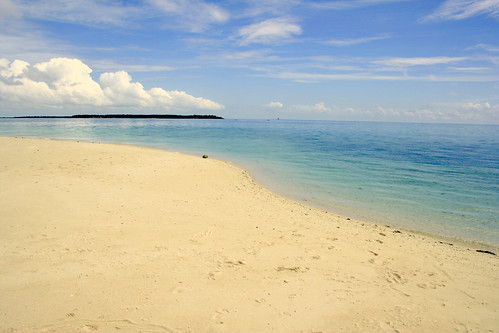
Mambacayao is politically part of the more populated island of Lipayran, which can be seen here
Canon EOS 350D Digital, 1/1250s, f/7.1, 18mm, ISO 100, -1/3EV
Getting to Bantayan is fairly easy. By car or by bus, one needs to travel some 108 kilometers from Cebu City to the port of Hagnaya in San Remigio town and then catch the ferry to Sta. Fe. There are about 5 trips per day, starting at 7:30AM, with the last trip at around 6:30PM. Others prefer the traditional “slow” boat which leaves the Cebu pier at around 9PM and arrives at Sta Fe early in the morning (schedule is 3x a week).
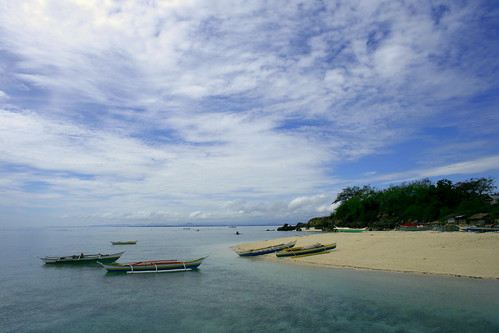
the fine sand of Mambucayao shifts in position with the tide and the season
Canon EOS 350D Digital, 1/1000s, f/9.0, 18mm, ISO 100
I can tell you however that the lure of the sea, sand and sun need not stop at Bantayan. A bit farther from the tourism bustle are 20 more islets, some of which are tropical gems. These islands spill 8 kilometers westwards into Negros. With names like Doong, Lipayran, Hilotongan and Bantigue, most of these islands can even be explored from main island by foot at low tide.
As coralline atolls go, these islands are bedecked with beaches of powdery white sand that sink to the tread, fringed with ubiquitous coconut trees and surrounded by pristine aquamarine waters. If I were to recommend just one islet, there can only be one answer: Mambacayao.
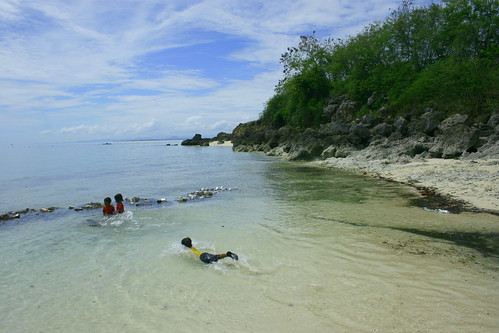
children are seen here frolicking in a pocket beach in Mambucayao
Canon EOS 350D Digital, 1/1250s, f/7.1, 18mm, ISO 100, -2/3EV
Visiting Mambacayao is another thing. The more common route is catching the regular boats from Bantayan to Lipayran, which is the more populated island just northeast of Mamacayao. There are probably some boat trips between the two islets and hiring a small boat should be easy and cheaper than if you charter a boat straight from Bantayan. I was lucky as I went there on business, so we arranged for a fishing boat from Hagnaya to take us straight to Lipayran, which took us about an hour and set us off some $100.
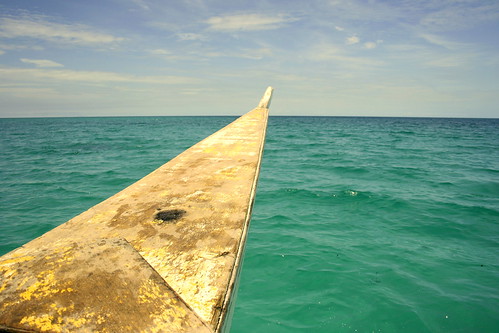
big fishing boats cannot enter the shallow shoal of Mambucayao so we had to get a smaller boat from Lipayran
Canon EOS 350D Digital, 1/2500s, f/4.0, 18mm, ISO 100
Mambacayao folks are friendly. There are no hostels but homestays can easily be arranged. People are quite hospitable and I suggest approaching the Mabugat family for assistance. They are the biggest landowners and count the famous jazz Filipina singer Vernie Varga as a family member.

beyond the seaweed farms is Mambacayao “gamay” or “small” Mambacayao, which is nearest to Negros (in the map it seems to be named “Yao”)
Canon EOS 350D Digital, 1/640s, f/5.6, 18mm, ISO 100, -1/3EV
I assume that there must be less than 100 homes in the islet. It can be explored quickly by foot in less than an hour although the rocky outcrops at the southend are not easy climbs. Pockets of beaches are all around. The sand generally shifts by season but wherever the boats dock, that is where the larger mound settles for that moment and where you probably would want to be.
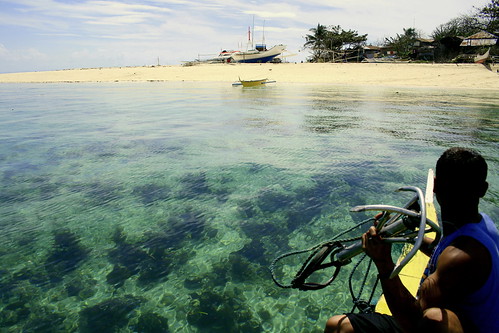
around the dock of Mambacayao, the waters are so clear that you can see the farm lines of seaweed below
Canon EOS 350D Digital, 1/1000s, f/5.6, 18mm, ISO 100, +1/3EV
Unsurprisingly, the people live off the sea. Made here are the famous danggit dried fishes and probably some guinamos, the notoriously odorous fermented anchovies. Nowadays, the more popular means of livelihood is seaweed farming. Environmentally friendly, expandable and marketable, this form of mariculture has caught a lot of favor.
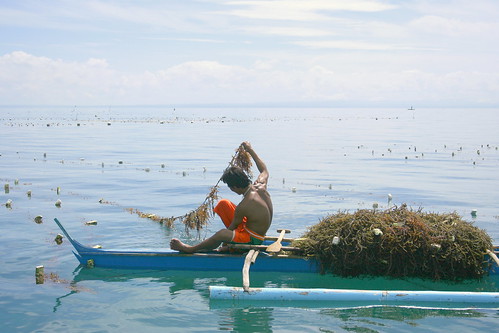
a seaweed farmer tending his farm at Mambacayao
Canon EOS 350D Digital, 1/2000s, f/5.6, 38mm, ISO 100, -1/3EV
I get to see so much of the Philippines with my travels and having been around, I don’t easily get awed. But for sheer beauty of its shifting sandy beach, clarity of the waters and health of its marine life, Mambacayao is a place to watch.
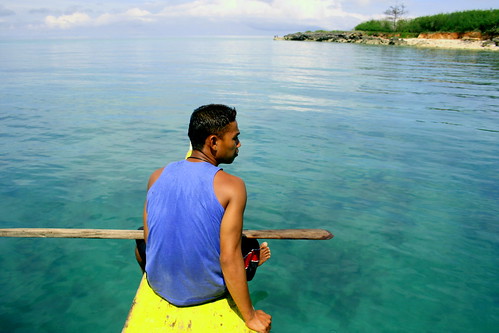
the moderate depth of the waters around the island give to hues that are blue green
Canon EOS 350D Digital, 1/1000s, f/5.6, 18mm, ISO 100, -1/3EV
I’ll be back there soon enough.
there’s more of the Bantayan islands in Mambacayao (part 1) and (part 2)






No comments:
Post a Comment